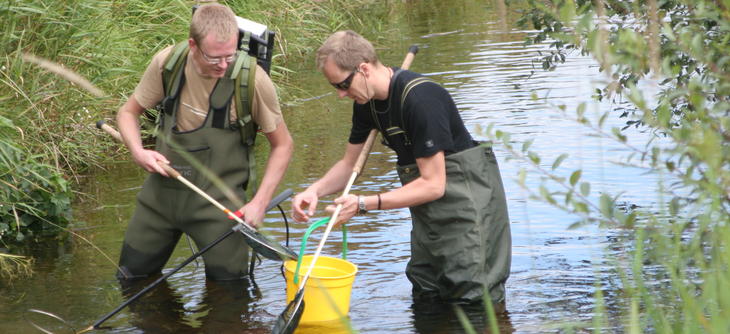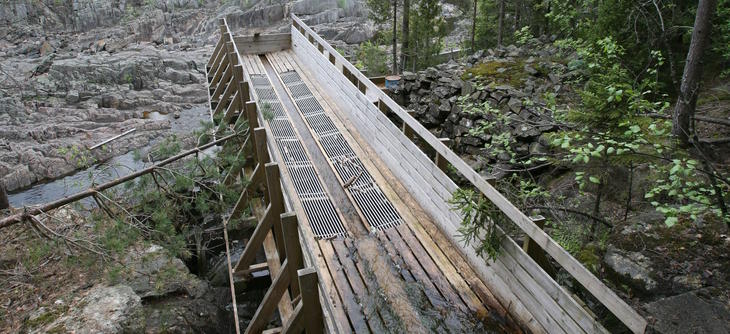Water management and revision of requirements

Skagerak Kraft’s core activity is hydroelectric power production. Our activities generate minimal emissions to water and air, but do entail interventions in ecosystems and landscapes. Our goal is to perform these interventions in a way that is adapted to local conditions and that causes as little disturbance as possible.
Rivers and watercourses are important as both landscape elements and ecosystems. Watercourses have a significant function in both drought and flood situations, in addition to having a multi-use value for the population in the form of recreation, transport and water supply for households, industry and agriculture. When developing and operating hydroelectric power systems, many interests must therefore be taken into account.
Sustainable water management
Skagerak carries out extensive environmental activities related to watercourses and fish with a view to achieving sustainable water management. Examples of environmental measures are operating the power plants in a manner adapted to the environment, supplementing of suitable spawning and growth substrate, fish stocking, facilitation of upstream and downstream fish migration, improvement of weirs and fish migration barriers. The overall goal is to achieve sustainable and self-recruiting fish stocks.
Skagerak regularly contributes to surveys of affected watercourses. The major focus has been on trout, while recent years have seen an increased focus on eel and freshwater pearl mussels. The eel is a vulnerable species in connection with passing through turbines when migrating in regulated rivers. In the Kragerø watercourse system, eel is manually moved to areas downstream of the power plants. When developing new power plants, we try to find solutions that maintain the best possible conditions for the eel’s upstream and downstream migration in the natural watercourse.
Revision of licence requirements
Many older regulation licences are currently being revised. The main objective is to assess measures to improve the environmental conditions in previously regulated watercourses. Skagerak is the regulator or main power producer in seven different cases; see the links below. We are also involved in a number of cases where Skagerak is a minority owner, of which the regulation systems used by Sira-Kvina and Otra Kraft are most important.
Skagerak Kraft expects more environmental surveys to be carried out in the watercourses where we are involved in power production, and that we may be required to implement further measures. Skagerak Kraft therefore has a strong focus on working systematically to assess, document and communicate which measures will be most expedient in relation to environmental, business and economic considerations.
| Licensing cases (see link for details) | County |
|---|---|
| Skagerak Kraft is responsible for the following licencing cases: | |
| Regulation of Hjartdøla, Tuddal watercourse and Heiåi: | Telemark |
| Regulation of Sundsbarm with pertaining transfers: | Telemark |
| Regulation of Uvdal watercourse: | Buskerud |
| Regulation of Gjuva, Vrenga and Høymyrselv on Blefjell mountain: | Buskerud |
| Skagerak Kraft is involved in the following licencing cases: | |
| Regulation of Aurdalsfjord in Begna: | Oppland |
| Regulation of Åbjøra watercourse in Valdres: | Oppland |
| Regulation of Hovatn, Fistøylvatn and Raudvatn in Finndøla: | Aust-Agder |
The EU Water Framework Directive
The EU Water Framework Directive is a directive intended to ensure integrated and ecosystem-based management of Europe’s water resources. The directive has been incorporated into Norwegian law in the Norwegian Regulation on a Framework for Water Management (The Water Regulations). The water management plans are key to following up the nature management requirements in our licences and our other environmental activities.
Skagerak Kraft holds environmental certification in accordance with ISO standard 14001 from Det Norske Veritas. ISO 14001 certification commits Skagerak Kraft to continuously improve its environmental performance in all its activities.
